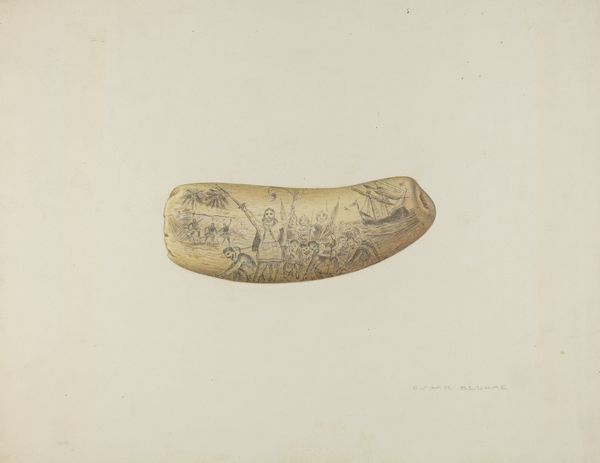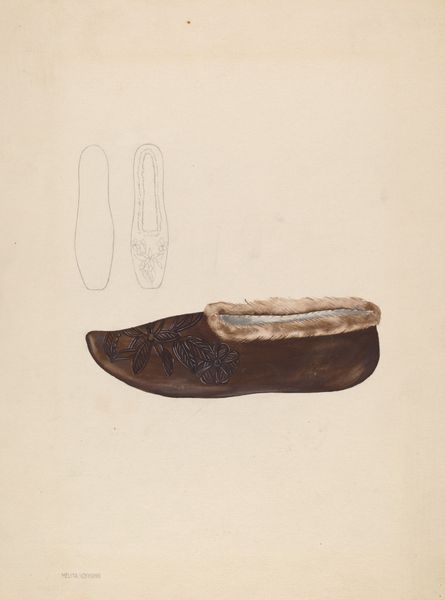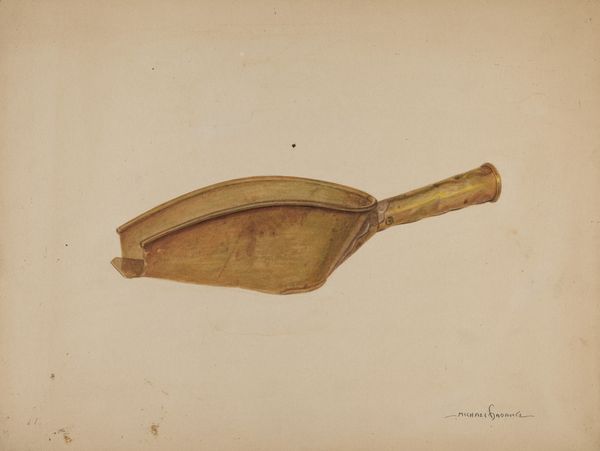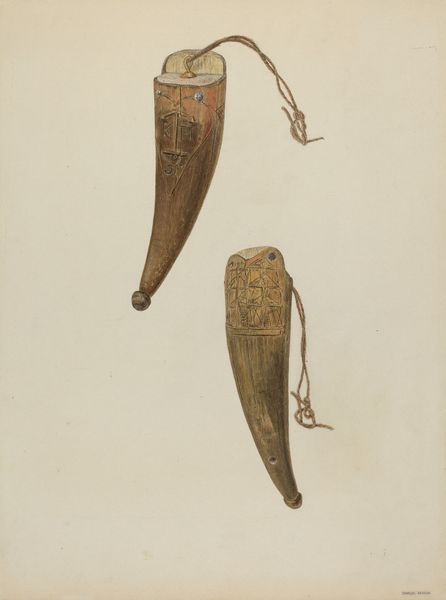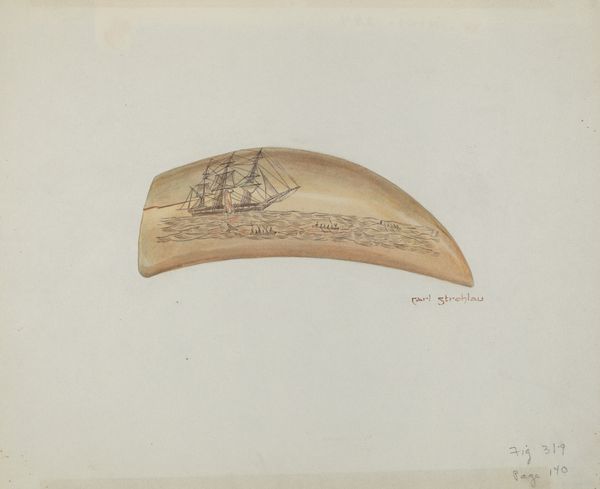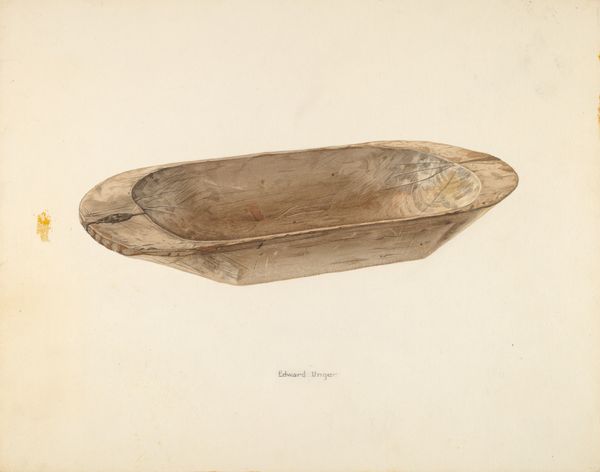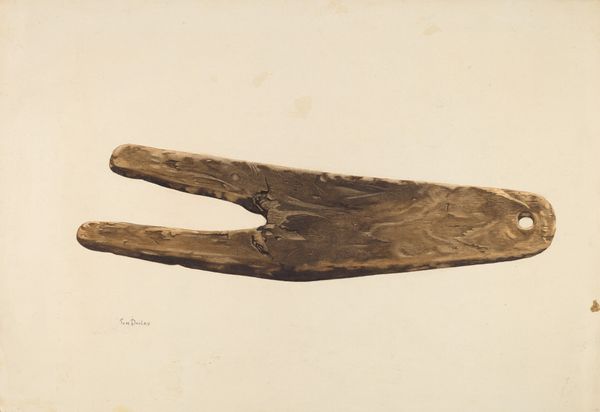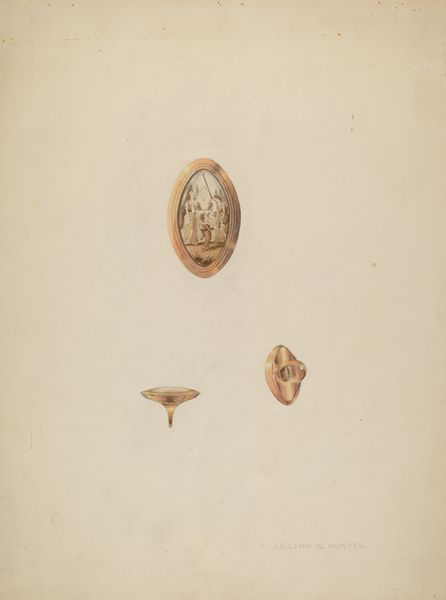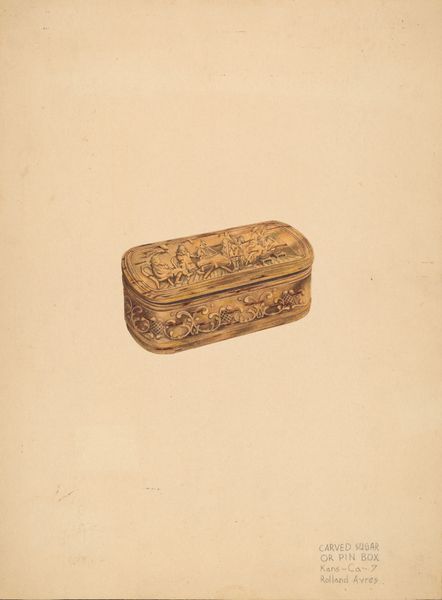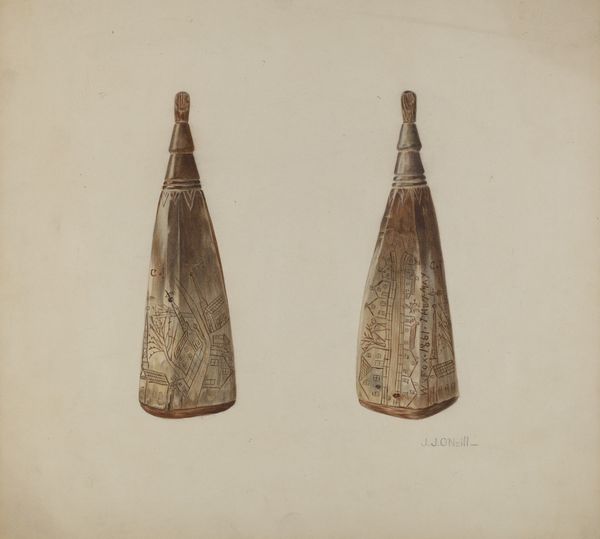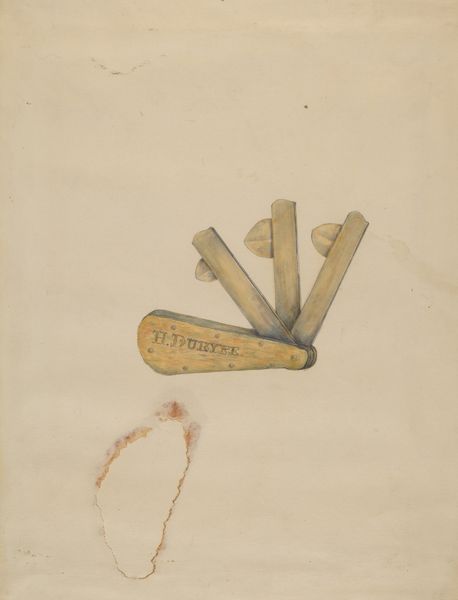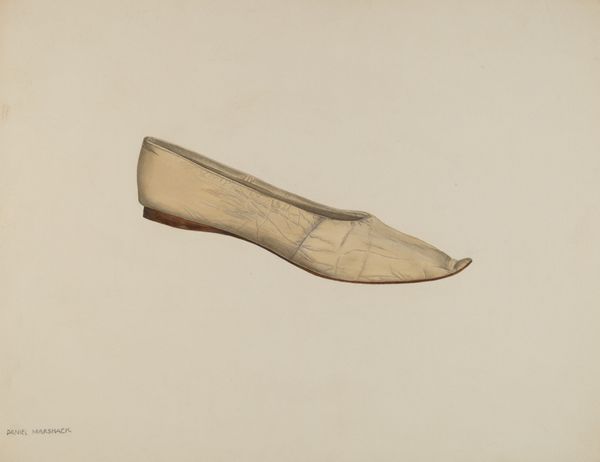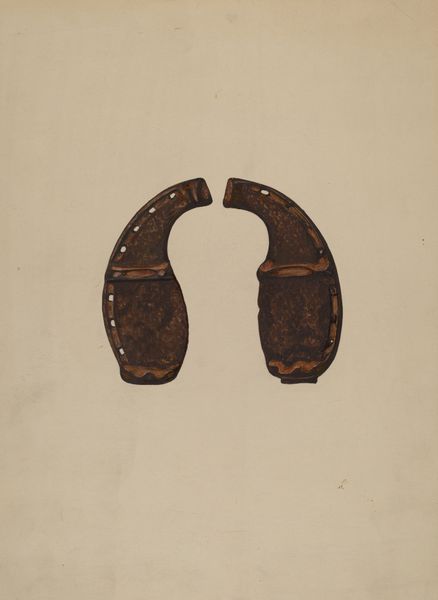
drawing
#
drawing
#
watercolor
#
realism
Dimensions: overall: 40.6 x 50.9 cm (16 x 20 1/16 in.) Original IAD Object: 5" long; 2 1/4" wide
Copyright: National Gallery of Art: CC0 1.0
Editor: So, this is a watercolor called "Scrimshaw: Walrus Tusk," created in 1941 by Oscar Bluhme. It's interesting how this drawing isolates these objects... almost elevates them. What jumps out at you about it? Curator: The cultural encoding within these objects is potent. Scrimshaw, as a practice, represents a fascinating intersection of cultures and environments. Think about the symbolic weight of the walrus tusk itself, harvested from a creature of immense power in the Arctic. What does it represent to the original communities and to those who later repurposed them? Editor: So, it's not just decoration. Curator: Absolutely not. Consider the imagery carved onto the tusk. What stories are they telling? Perhaps scenes of the hunt, of daily life, or even mythological narratives? Each image acts as a visual mnemonic, carrying down knowledge and beliefs. Editor: The one on the left looks like it might include people or figures. Curator: Exactly. And what emotions do these depictions evoke? Is there a sense of reverence for nature, a celebration of community, or a stoic acceptance of hardship? The symbols offer a window into the worldview of the people who created them. Editor: I never really considered that objects could hold so much information just by existing. Curator: Precisely. And remember, these images have layers of meaning. What the artist intended might not be how it was received later. Scrimshaw pieces become palimpsests, with cultural memories continuously added and reinterpreted across generations. Editor: That gives me a new appreciation for artwork in general and how cultural artifacts have multiple life cycles and interpretations. Thanks! Curator: My pleasure! It’s been an enlightening look at how symbolism informs our shared histories and understanding of humanity.
Comments
No comments
Be the first to comment and join the conversation on the ultimate creative platform.
